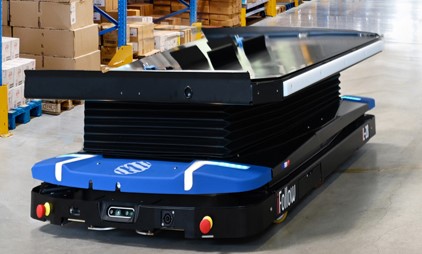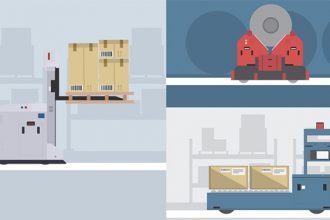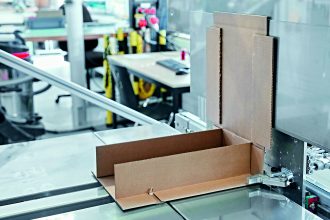Top Misconceptions of Mobile Automation

As mobile automation technology rapidly evolves, an increasing number of businesses are looking to adopt it to improve efficiency and productivity.
However, there are several misconceptions about mobile automation that can prevent businesses from taking advantage of its benefits. In this article, we will dispel some of the most common myths about mobile automation and explain why they are wrong.
Myth #1: MAVs require invasive and expensive infrastructure
One of the biggest myths about Mobile Automation Vehicles (MAVs) is that they require extensive and expensive infrastructure changes to be implemented. The truth is MAVs can easily integrate into existing facilities with minimal changes.
Mobile automation solutions are usually easy to install–or in some cases, require no installation at all. A good rule of thumb is that wherever you use forklifts, you can use MAVs. In addition to replacing forklifts, they also offer added benefits. For example, the ability to navigate narrow aisles, eliminating the need for safety fencing, and the ability to work side-by-side with humans.
Many MAV manufacturers also offer guidance and support throughout the entire integration process to ensure a smooth transition.
Myth #2: MAVs won’t integrate with current software
MAVs integrate easily with any standard ERP, WMS, or host system. Most providers offer seamless integration. Additionally, if you need help getting started, many providers can even facilitate the process for you.
In some cases, MAVs can even start adding value without the need for integration. This means your business can start seeing the benefits of automation immediately.
There’s no need to worry about compatibility – MAVs will work with almost any system that you have in place. Integrating MAVs into your warehouse operation is a breeze.
Myth #3: Automation is all or nothing
Mobile automation for warehouses is often thought to be an all-or-nothing proposition, that you can either automate the entire warehouse or not automate it at all. This is a myth.
There are many different ways to add MAVs to a warehouse. You can automate specific tasks, or you can automate the entire process from start to finish. MAVs are also ideal for testing or scaling automation. For instance, starting with one or two machines and expanding later on. They can be added in phases, including alterations to respond to demand. You can also use a combination of these methods, depending on your needs and the size of your warehouse.
This flexibility is what makes MAVs such an attractive option.
Myth #4: MAVs won’t work for your application
MAVs come in all shapes and sizes and are designed for different purposes. Some are small and nimble, perfect for maneuvering through tight spaces or between racks of products. Others are larger and more robust, built to carry heavier loads over longer distances. No matter your application or business, there is likely a MAV that can help.
One specific type of MAV with a special navigation system is called an AMR. AMRs use internal facility maps to efficiently navigate based on current conditions. This enables them to function flexibly alongside human workers, adapting to changes in the layout or product mix on the fly.
MAVs are extremely varied and not all fork based. Regardless of your end product or warehouse layout, there is a MAV that could be a fit.
Mobile automation unlocks operational efficiency
Mobile automation has revolutionized the way warehouses operate by unlocking significant operational efficiencies.
MAVs and other automation solutions like them augment a human workforce by enabling workers to complete tasks faster and more accurately than ever before. Employees can focus on more rewarding tasks, increasing their job satisfaction.
Mobile automation has other benefits as well, including reducing injuries, errors, and product damage. It also lowers operating costs by enabling multi-shift and 24/7 operations.
The use of mobile automation in warehouses is becoming increasingly common and is transforming the industry. By supporting the human workforce and increasing operational capacity, mobile automation can help businesses save time and money.
To find out more about the MAG group or to get more information about Mobile Automation, please visit https://www.mhi.org/mag
For further articles/podcasts from MAG:
Podcast: MAG – How To Get Started With Mobile Automation
Podcast: Sensors Revolutionizing Automated Material Movement: Efficiency And Safety Enhanced
Powering Tomorrow’s Mobile Automation
The Unexpected (Soft) Benefits Of Mobile Automation
Navigating The Mobile Automation Landscape
Getting Started With Mobile Automation
The Unexpected (Soft) Benefits Of Mobile Automation
How To Make Mobile Automation Affordable



